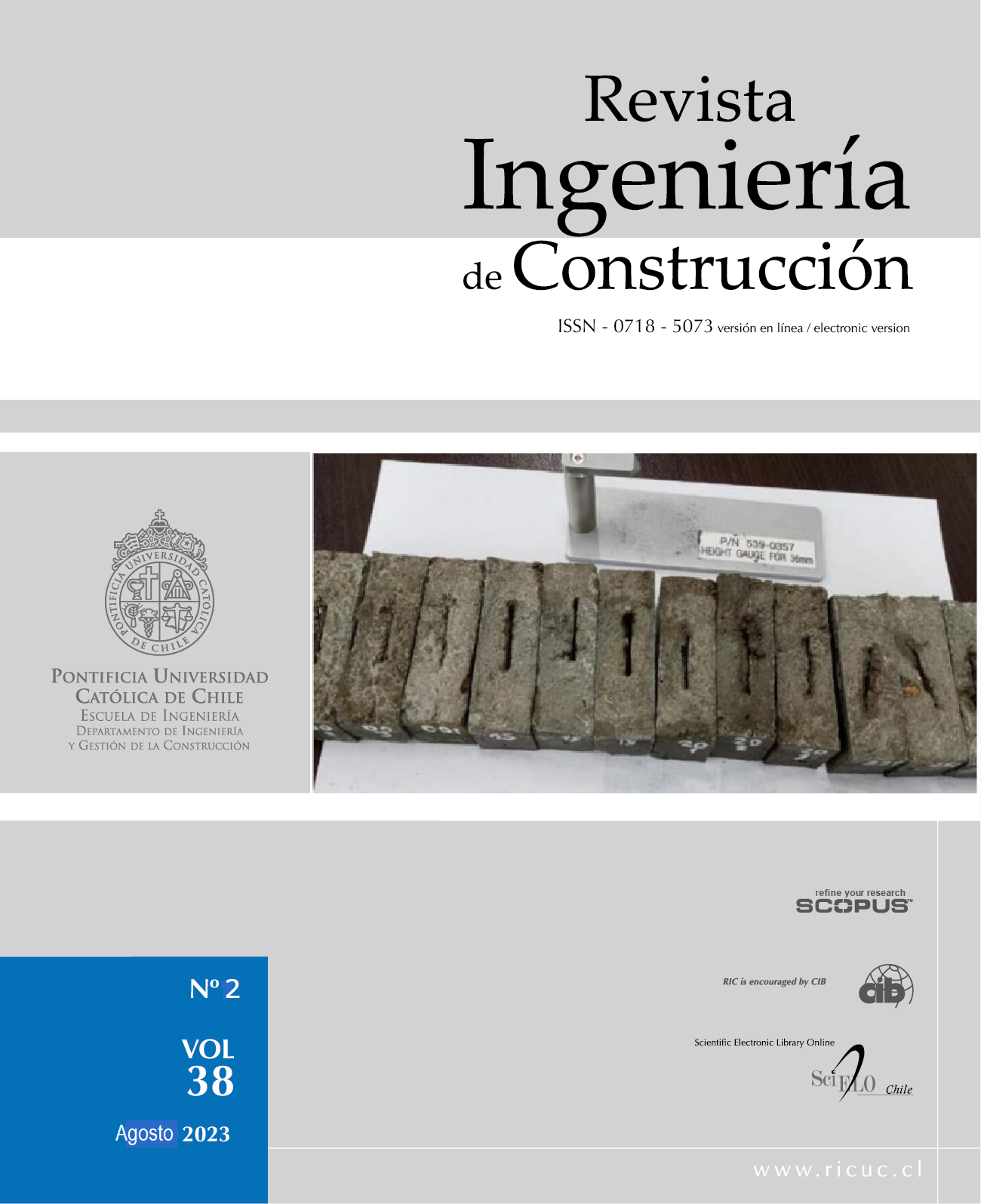Influence of coarse aggregate granulometry on clogging in pervious concrete
DOI:
https://doi.org/10.7764/RIC.00062.21Keywords:
Pervious concrete, porosity, permeability, clogging, grain sizeAbstract
The phenomenon of clogging in pervious concrete (PC) has been one of the main causes of the hydraulic useful life reduction. This phenomenon begins with the partial or total clogging of the pore network and consequently the reduction of the permeability coefficient. Considering that the porous network of the PC is directly related to the aggregate used, the present work aims to evaluate the influence of granulometry on the clogging of the PC. The results showed that the largest aggregate size (D_max=19 mm) favors the hydraulic properties of the material. However, the variation of the granulometry grading distribution (poorly graded and single-sized) does not generate a significant difference in such results. In terms of clogging, there was a marked effect on the type of the granulometry grading distribution, the use of poorly graded aggregates led to a lower permeability reduction due to clogging when compared to PCs with single-sized aggregates.


